Dermatologist vs Aesthetician: Expert Skin Care Comparison Guide
What are the key differences between dermatologists and aestheticians. How do their qualifications and treatments compare. Which professional should you choose for your skin care needs. What factors should you consider when deciding between a dermatologist and aesthetician.
Understanding the Role of Dermatologists in Skin Care
Dermatologists are medical doctors who specialize in diagnosing and treating conditions affecting the skin, hair, nails, and mucous membranes. With extensive medical training, dermatologists can address a wide range of skin health issues beyond just cosmetic concerns.
What Can Dermatologists Diagnose and Treat?
Dermatologists are equipped to handle over 3,000 different skin conditions. Some of the most common issues they diagnose and treat include:
- Acne and acne scarring
- Eczema and psoriasis
- Skin cancer and precancerous lesions
- Hair loss (alopecia)
- Nail fungus and other nail disorders
- Contact dermatitis and allergic reactions
- Rashes and hives
- Warts and other skin growths
- Dandruff and scalp conditions
Beyond diagnosing specific conditions, dermatologists also perform preventive skin exams, provide patient education, and offer treatments ranging from topical and oral medications to in-office procedures.
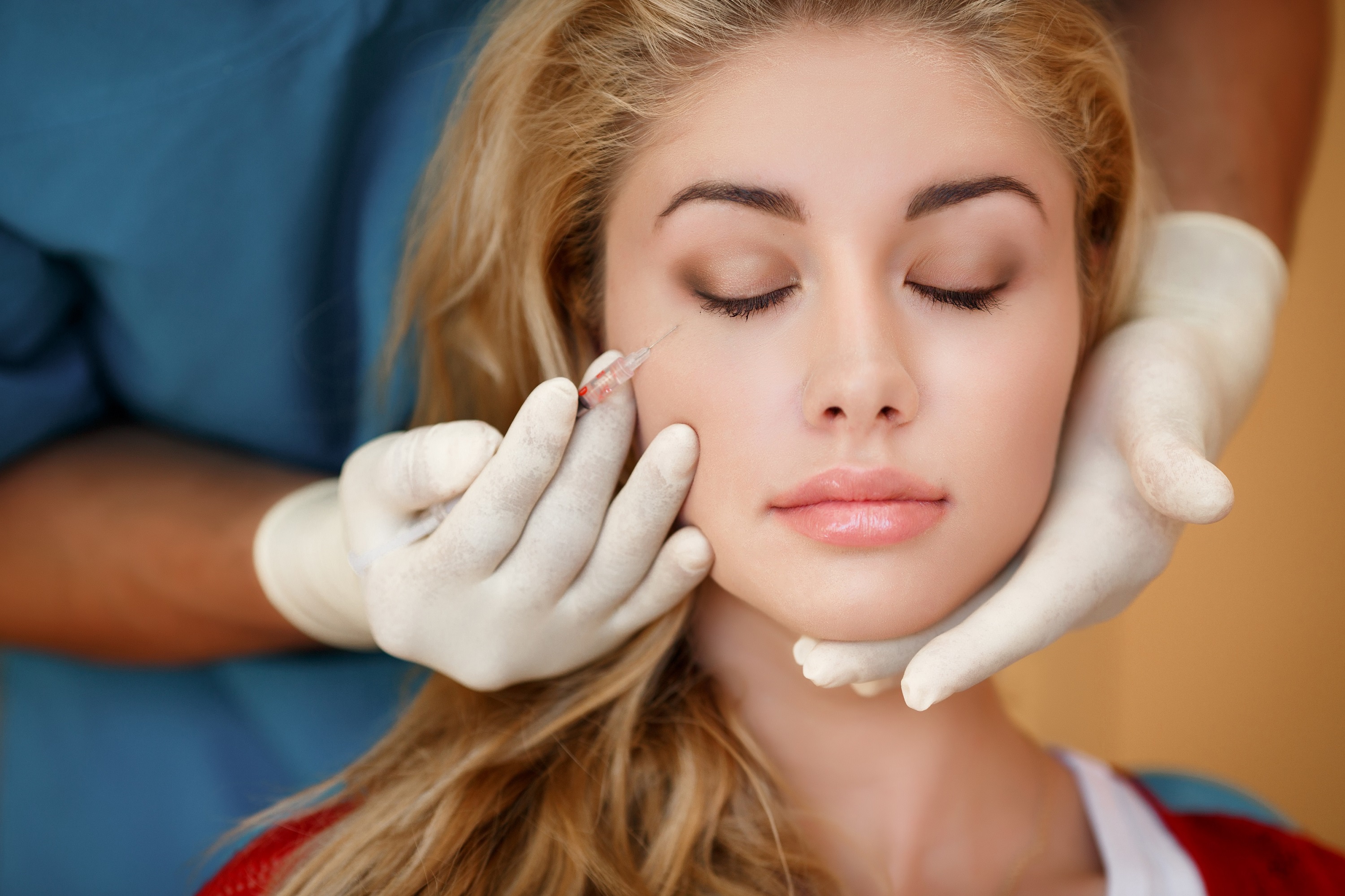
Medical vs. Cosmetic Dermatology
While all dermatologists receive training in both medical and cosmetic procedures, some choose to specialize in one area or the other. Medical dermatologists focus primarily on skin health and treating diseases. Cosmetic dermatologists, on the other hand, emphasize aesthetic improvements and anti-aging treatments.
Common cosmetic dermatology procedures include:
- Botox and dermal filler injections
- Chemical peels
- Laser skin resurfacing
- Microneedling
- Laser hair removal
It’s worth noting that insurance typically covers medically necessary dermatology treatments but not elective cosmetic procedures.
The Extensive Training and Credentials of Dermatologists
Becoming a dermatologist requires a significant investment of time and education. The path to becoming a board-certified dermatologist includes:
- Completing a 4-year bachelor’s degree
- Attending 4 years of medical school
- Completing a 1-year internship
- Participating in a 3-year dermatology residency program
- Optional fellowship for subspecialties (e.g., Mohs surgery, dermatopathology)
- Passing board certification exams
In total, dermatologists undergo at least 12 years of education and training before they can practice independently.
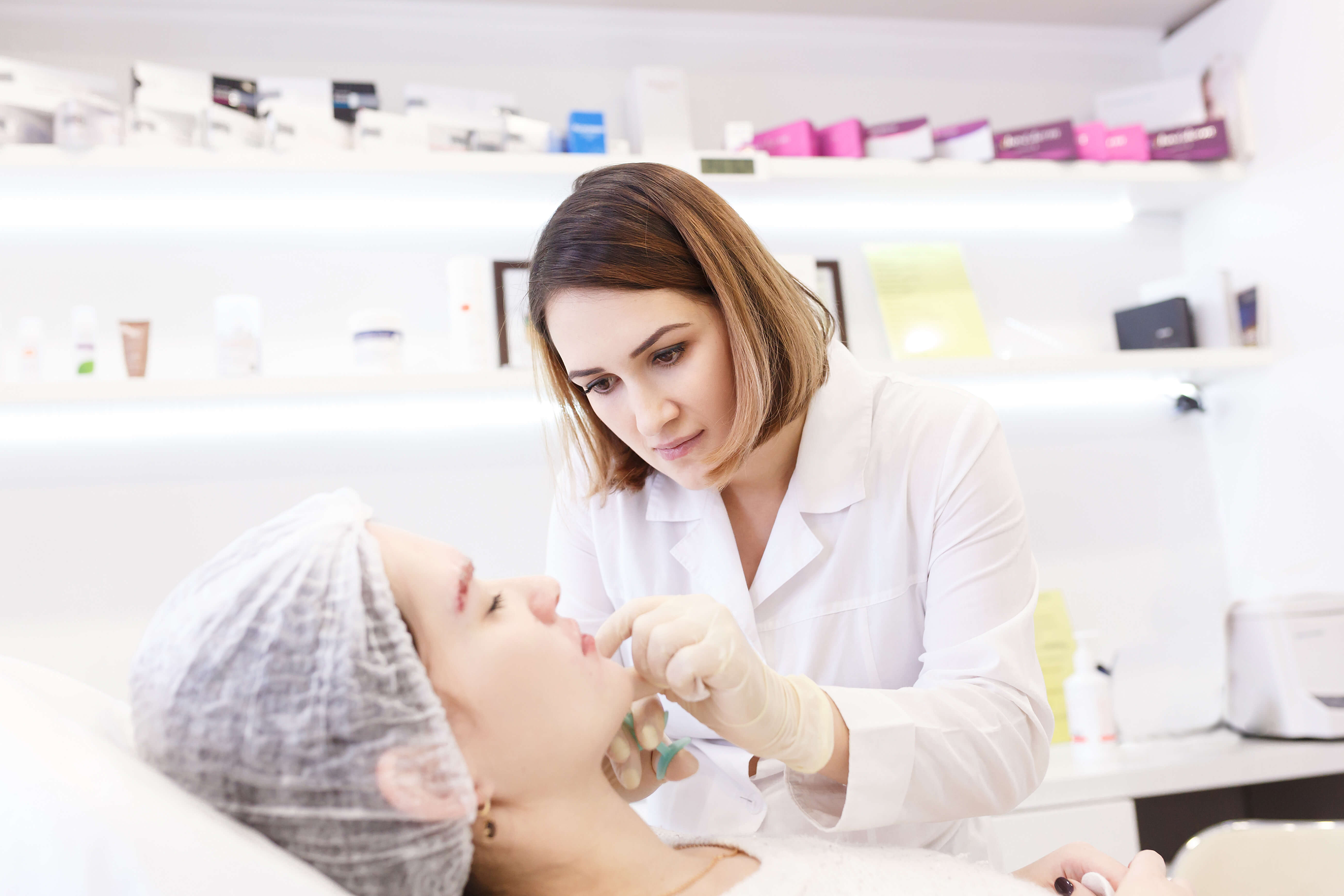
Board Certification for Dermatologists
Board certification demonstrates that a dermatologist has met rigorous standards of education, knowledge, and experience. In North America, the most respected certifying boards include:
- American Board of Dermatology
- American Osteopathic Board of Dermatology
- Royal College of Physicians and Surgeons of Canada
Board-certified dermatologists often display the letters FAAD (Fellow of the American Academy of Dermatology) after their name, indicating their high level of expertise and commitment to ongoing education in the field.
Exploring the Role of Aestheticians in Skin Care
Aestheticians, also known as estheticians or skin care specialists, focus on improving the appearance and health of the skin’s outermost layers. While they don’t have medical training like dermatologists, aestheticians play a valuable role in helping clients maintain healthy, beautiful skin.
What Services Do Aestheticians Provide?
Aestheticians offer a range of non-invasive treatments and services aimed at enhancing skin appearance and promoting overall skin health. Common services include:
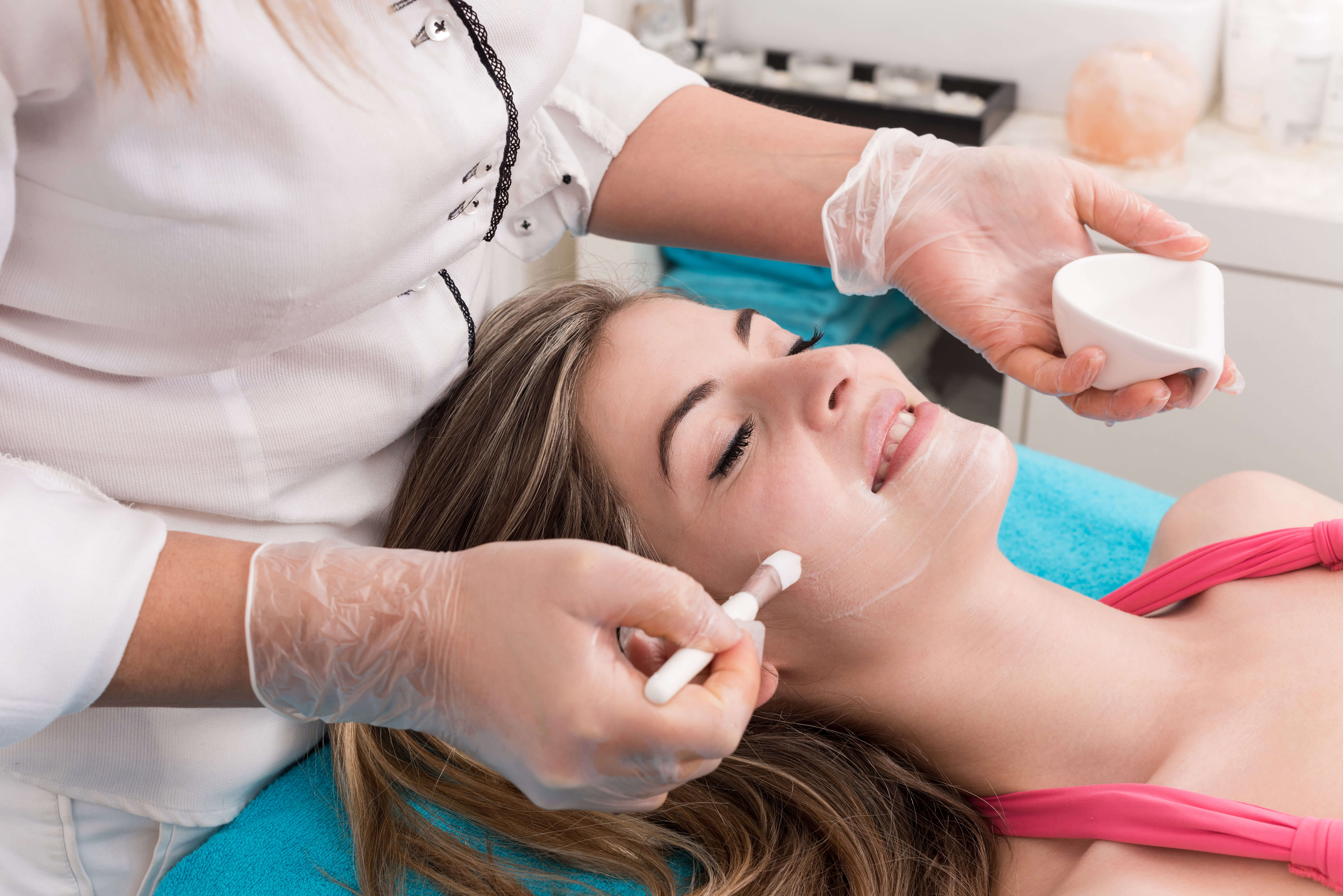
- Facials and skin analysis
- Mild chemical peels
- Exfoliation treatments
- Acne treatments
- Hair removal (waxing, threading, sugaring)
- Makeup application
- Skin care product recommendations
Aestheticians can provide valuable guidance on daily skin care routines and product selection tailored to a client’s specific skin type and concerns.
Limitations of Aesthetician Services
It’s important to understand that aestheticians cannot diagnose medical skin conditions or prescribe medications. Their scope of practice is limited to the outermost layers of the skin, and they are not permitted to perform invasive procedures or use certain medical-grade devices without proper supervision.
In most states, aestheticians are prohibited from:
- Diagnosing skin diseases or disorders
- Prescribing medications or treatments
- Performing invasive procedures (e.g., injectables, fillers)
- Using medical-grade lasers or other advanced devices without supervision
Regulations regarding aesthetician services can vary by state, so it’s essential to be aware of local laws and restrictions.
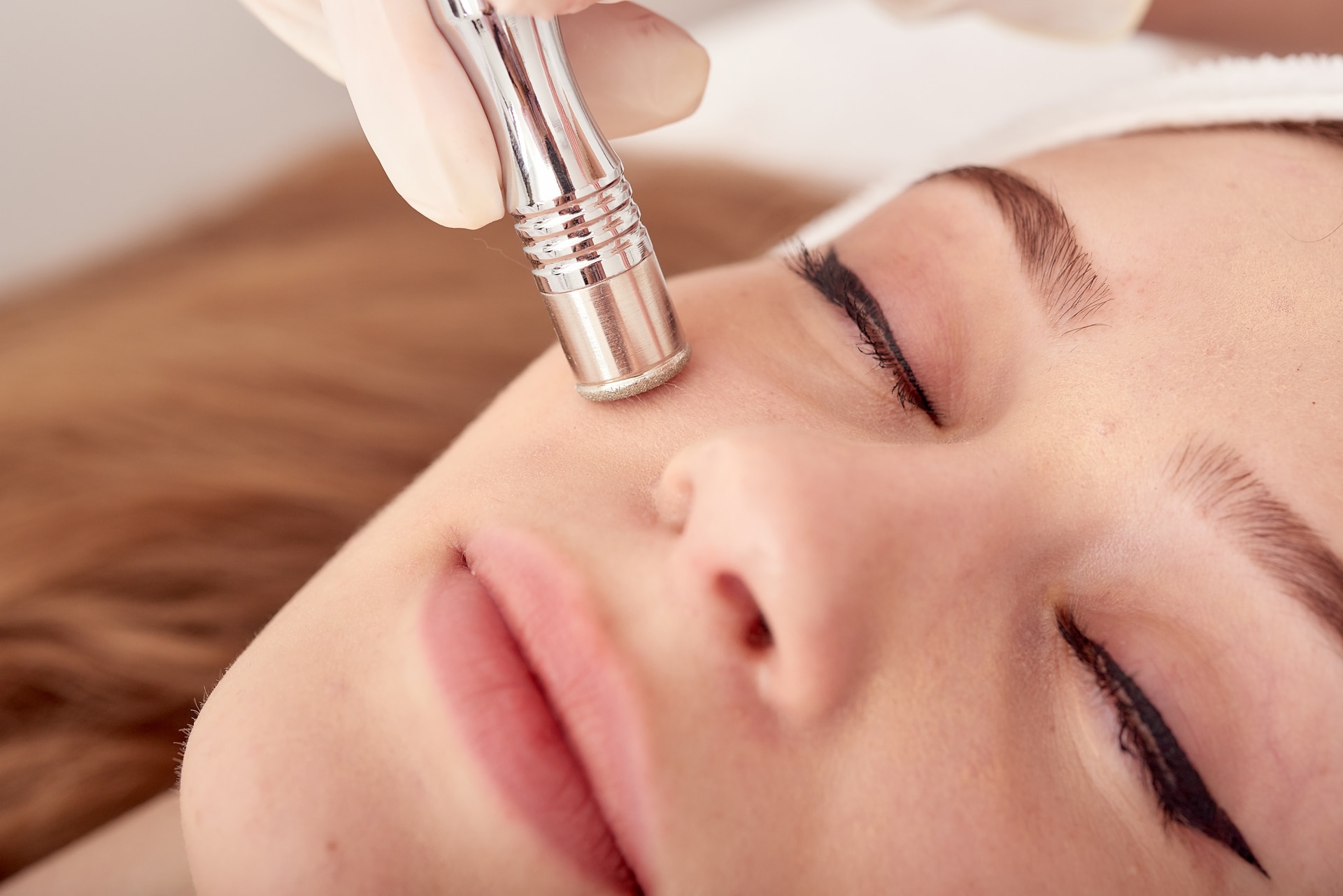
Training and Certification for Aestheticians
While the path to becoming an aesthetician is not as lengthy as that of a dermatologist, it still requires dedicated study and hands-on training. The typical steps to become a licensed aesthetician include:
- Completing a state-approved aesthetics program (typically 600-750 hours)
- Passing a written and practical exam
- Obtaining state licensure
- Continuing education to maintain licensure
Some aestheticians may pursue additional certifications or specialized training in areas such as medical aesthetics, oncology aesthetics, or aromatherapy to expand their knowledge and service offerings.
Advanced Aesthetician Certifications
For aestheticians looking to enhance their credentials and expertise, several advanced certifications are available:
- Certified Advanced Aesthetician (CAA)
- Certified Medical Aesthetician (CMA)
- Licensed Master Aesthetician (in some states)
- National Coalition of Estheticians, Manufacturers/Distributors & Associations (NCEA) Certified
These certifications often require additional training hours, exams, and sometimes a certain number of years of professional experience.
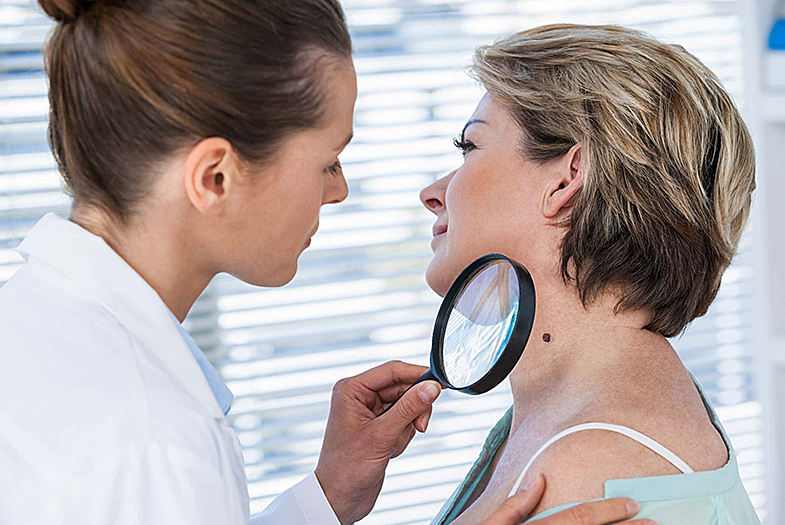
Key Differences Between Dermatologists and Aestheticians
Understanding the distinctions between dermatologists and aestheticians can help you make an informed decision about which professional to consult for your skin care needs. Here are some of the primary differences:
Medical Expertise and Scope of Practice
Dermatologists have extensive medical training and can diagnose and treat a wide range of skin conditions, including potentially serious issues like skin cancer. Aestheticians focus on cosmetic treatments and cannot diagnose or treat medical skin conditions.
Treatment Approaches
Dermatologists can prescribe medications, perform surgical procedures, and use advanced medical devices. Aestheticians are limited to non-invasive treatments that target the skin’s surface.
Education and Training
Dermatologists complete at least 12 years of higher education, including medical school and residency. Aestheticians typically complete a 6-12 month training program followed by state licensure.
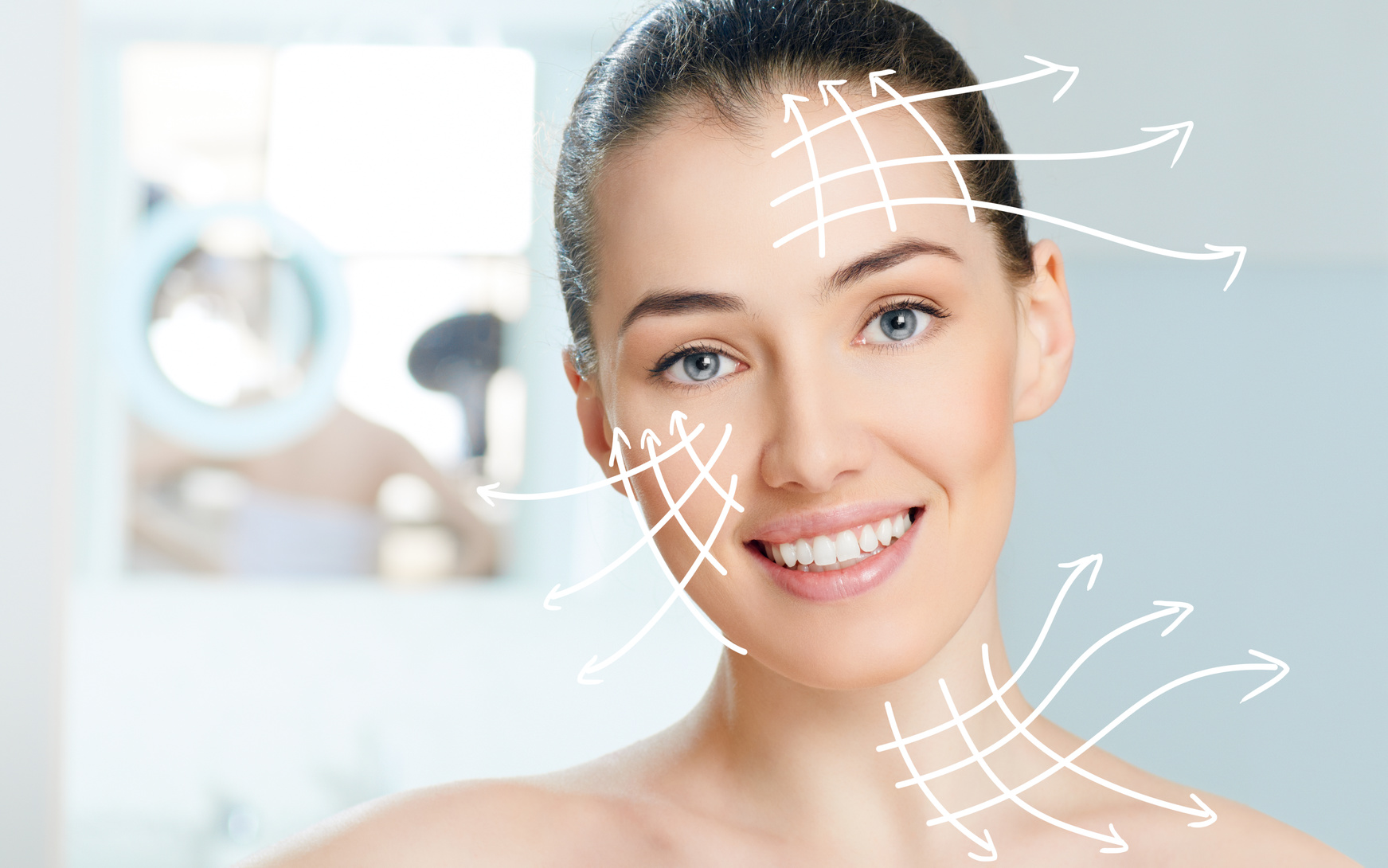
Insurance Coverage
Many dermatology services are covered by health insurance, especially when treating medical conditions. Aesthetician services are generally considered cosmetic and are not covered by insurance.
When to See a Dermatologist vs. an Aesthetician
Choosing between a dermatologist and an aesthetician depends on your specific skin concerns and goals. Here are some guidelines to help you decide:
Consult a Dermatologist For:
- Suspicious moles or skin growths
- Persistent acne or other skin conditions that don’t respond to over-the-counter treatments
- Skin rashes or allergic reactions
- Hair loss or scalp issues
- Nail disorders
- Annual skin cancer screenings
- Prescription medications for skin conditions
- Advanced anti-aging treatments (e.g., laser resurfacing, deep chemical peels)
Visit an Aesthetician For:
- Regular facials and skin maintenance
- Mild acne treatments
- Skin brightening and rejuvenation
- Gentle chemical peels
- Hair removal (waxing, threading)
- Makeup application and lessons
- Personalized skin care product recommendations
In many cases, dermatologists and aestheticians can work together to provide comprehensive skin care. For example, a dermatologist might diagnose and treat a skin condition, while an aesthetician provides complementary treatments and ongoing maintenance care.

Factors to Consider When Choosing Between a Dermatologist and Aesthetician
When deciding which skin care professional to consult, consider the following factors:
Nature of Your Skin Concern
Is your issue primarily cosmetic, or do you suspect an underlying medical condition? For medical concerns or persistent issues, a dermatologist is the better choice.
Desired Treatment Outcomes
Are you looking for long-term medical treatment or quick cosmetic improvements? Dermatologists can offer more advanced and lasting solutions for certain concerns.
Budget and Insurance Coverage
Consider whether your insurance will cover the services you need. Dermatology visits for medical issues are often covered, while aesthetician services typically are not.
Time Commitment
Dermatologist appointments may have longer wait times, while aesthetician services are often more readily available. Consider how quickly you need to address your skin concerns.
Personal Preferences
Some people prefer the medical approach of a dermatologist, while others enjoy the spa-like atmosphere of an aesthetician’s treatment room. Consider which environment you find more comfortable.
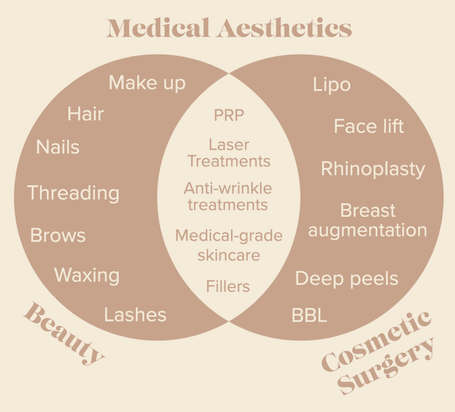
The Future of Skin Care: Collaboration Between Dermatologists and Aestheticians
As the field of skin care continues to evolve, many experts predict increased collaboration between dermatologists and aestheticians. This integrative approach can provide patients with the best of both worlds: medical expertise combined with specialized cosmetic treatments and ongoing skin maintenance.
Benefits of Collaborative Skin Care
When dermatologists and aestheticians work together, patients can experience several advantages:
- Comprehensive treatment plans addressing both medical and cosmetic concerns
- Improved continuity of care
- Access to a wider range of treatment options
- More personalized skin care recommendations
- Better long-term outcomes for skin health and appearance
Some dermatology practices are already incorporating aesthetician services, allowing for seamless coordination between medical treatments and cosmetic procedures.
The Rise of Medical Spas
Medical spas, or medspas, represent another growing trend in collaborative skin care. These facilities often employ both dermatologists and aestheticians, offering a range of medical and cosmetic treatments in a luxurious spa-like setting.
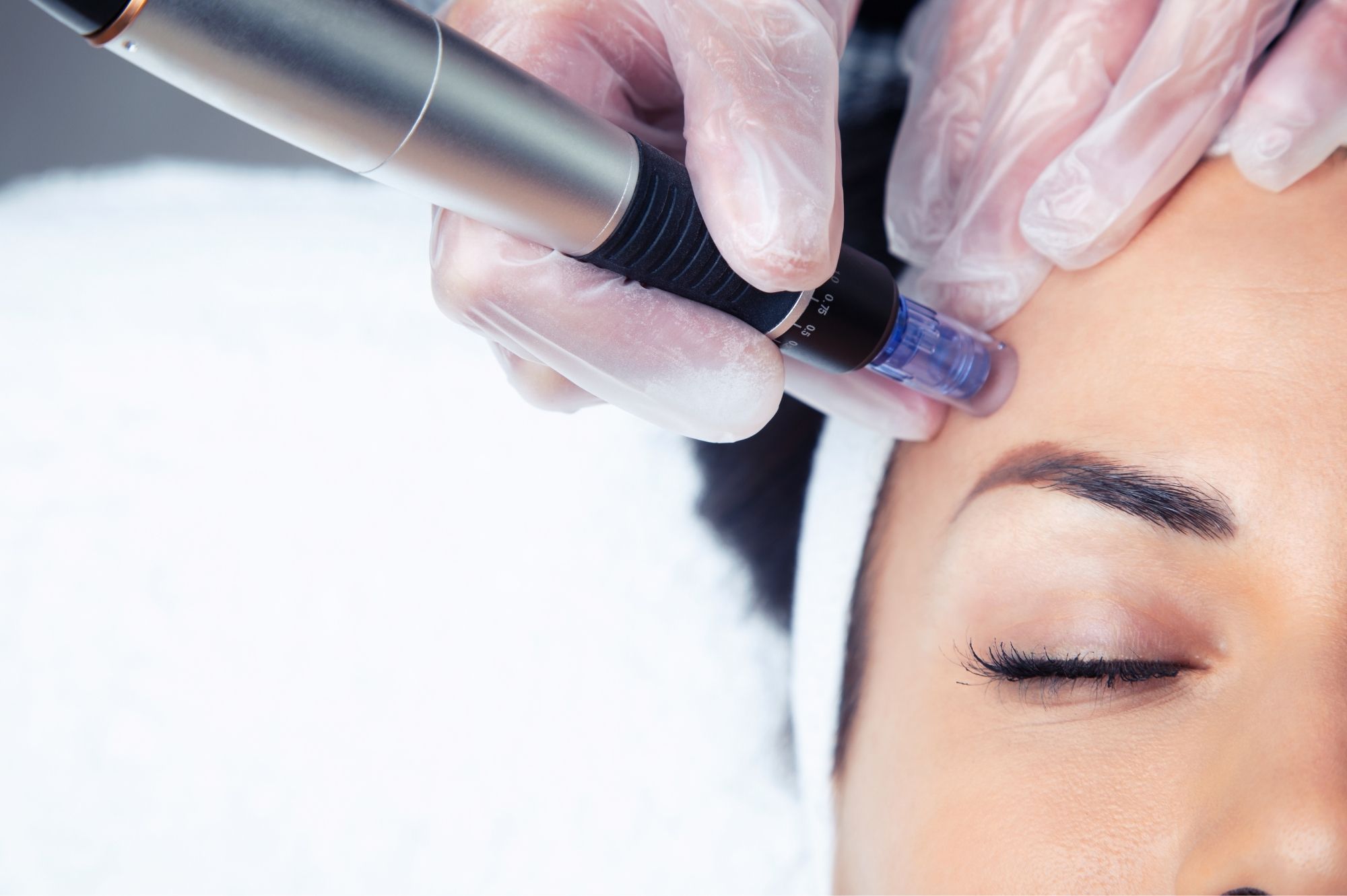
While medical spas can provide convenient access to various skin care services, it’s important to ensure that any medical procedures are performed by qualified professionals. Always verify the credentials of the staff and the supervision of medical treatments at these facilities.
In conclusion, both dermatologists and aestheticians play valuable roles in promoting skin health and beauty. By understanding the unique expertise and services offered by each professional, you can make informed decisions about your skin care journey. Whether you choose to see a dermatologist, an aesthetician, or both, the key is to prioritize your skin’s health and work with qualified professionals who can help you achieve your skin care goals.
What They Treat and How to Choose
If you have a skin care concern you’d like to address, you can consult two different kinds of experts: estheticians and dermatologists.
While both are skin care professionals, they have distinct expertise and offer different kinds of services.
An esthetician, or skin care specialist, provides services geared toward improving the external appearance of your skin. A dermatologist specializes in the health of your skin.
Dermatologists are doctors trained to diagnose specific skin conditions and treat them. They might, for example, prescribe prescription medications or perform in-office procedures, from removing cysts and growths to performing skin cancer biopsies.
Estheticians, on the other hand, perform treatments that target the surface of your skin, like facials and mild chemical peels.
Understanding the difference between estheticians and dermatologists will help you figure out which expert is better suited to resolving your specific skin issues. Here’s what you need to know about these professionals to make an informed decision.
Here’s what you need to know about these professionals to make an informed decision.
A dermatologist is a doctor who specializes in the skin, hair, nails, and mucous membranes. They can diagnose and treat more than 3,000 conditions.
Dermatologists can:
- perform diagnostic and preventive exams
- offer counseling and education about skin conditions
- provide treatment
While many dermatologists offer both medical and cosmetic dermatology procedures, some dermatologists might specialize in either medical or cosmetic services.
A dermatologist who specializes in medical procedures will typically focus on the health of your skin. They can diagnose a wide range of conditions and concerns, including:
- alopecia
- eczema
- psoriasis
- skin cancer
- contact dermatitis
- nail fungus
- dandruff
- allergic reactions
- rashes
- warts
- scalp and hair disorders
- subcutaneous growths
Dermatologists who specialize in cosmetic procedures might focus on offering treatments that, while not strictly necessary for health, may help you make aesthetic improvements to your skin.
For instance, you might consult a cosmetic dermatologist if you’d like to reduce the appearance of wrinkles and fine lines or sunspots.
Other procedures they offer include:
- dermal fillers
- Botox
- microneedling
- chemical peels
- laser resurfacing
- laser hair removal
Any dermatologist can recommend prescription medications to treat acne, for example. But a dermatologist who specializes in cosmetic procedures like deep peels and laser resurfacing can help you explore options for lessening the appearance of acne scars.
That said, all dermatologists are qualified to practice both medical and cosmetic procedures.
Another key difference lies in where they practice.
Dermatologists often work at specialty clinics and private practices, but typically, only dermatologists who specialize in medical procedures will work for larger healthcare organizations or hospitals. Dermatologists who specialize in cosmetic procedures may also work at medical spas.
It’s also important to note that insurance companies generally cover medical dermatology procedures considered essential for your health, but they won’t cover elective cosmetic treatments.
Training and credentials
Dermatologists go through at least 12 years of education and training before practicing. After earning a bachelor’s degree, they:
- attend medical school to become a doctor
- participate in a year-long internship
- complete three years of residency, treating patients alongside experienced dermatologists
After that, some dermatologists may continue their training to pursue a specialization. For example, they may participate in a fellowship program to become a dermatopathologist, who diagnoses skin diseases and disorders under a microscope, or a Mohs surgeon, who can perform a special technique to remove minimal amounts of skin cancer.
Following residency training, a dermatologist can also take an exam to become board certified. If a dermatologist is board certified, the letters FAAD (Fellow of the American Academy of Dermatology) will appear after their name.
If a dermatologist is board certified, the letters FAAD (Fellow of the American Academy of Dermatology) will appear after their name.
In North America, boards that can grant this certification include:
- the American Board of Dermatology
- the American Osteopathic Board of Dermatology
- the Royal College of Physicians and Surgeons of Canada
Other boards can also grant this certification, but these three require the highest level of training and expertise.
Estheticians are professionals trained to provide treatments to the outermost layers of your skin. They can offer guidance with caring for and improving the appearance of your skin.
Unlike dermatologists, they don’t have medical training, so they typically can’t do things like:
- diagnose skin conditions
- prescribe medications
- perform any kind of invasive treatments, including injectables and fillers
In some states, estheticians may be able to perform injectables and other procedures with a dermatologist’s supervision.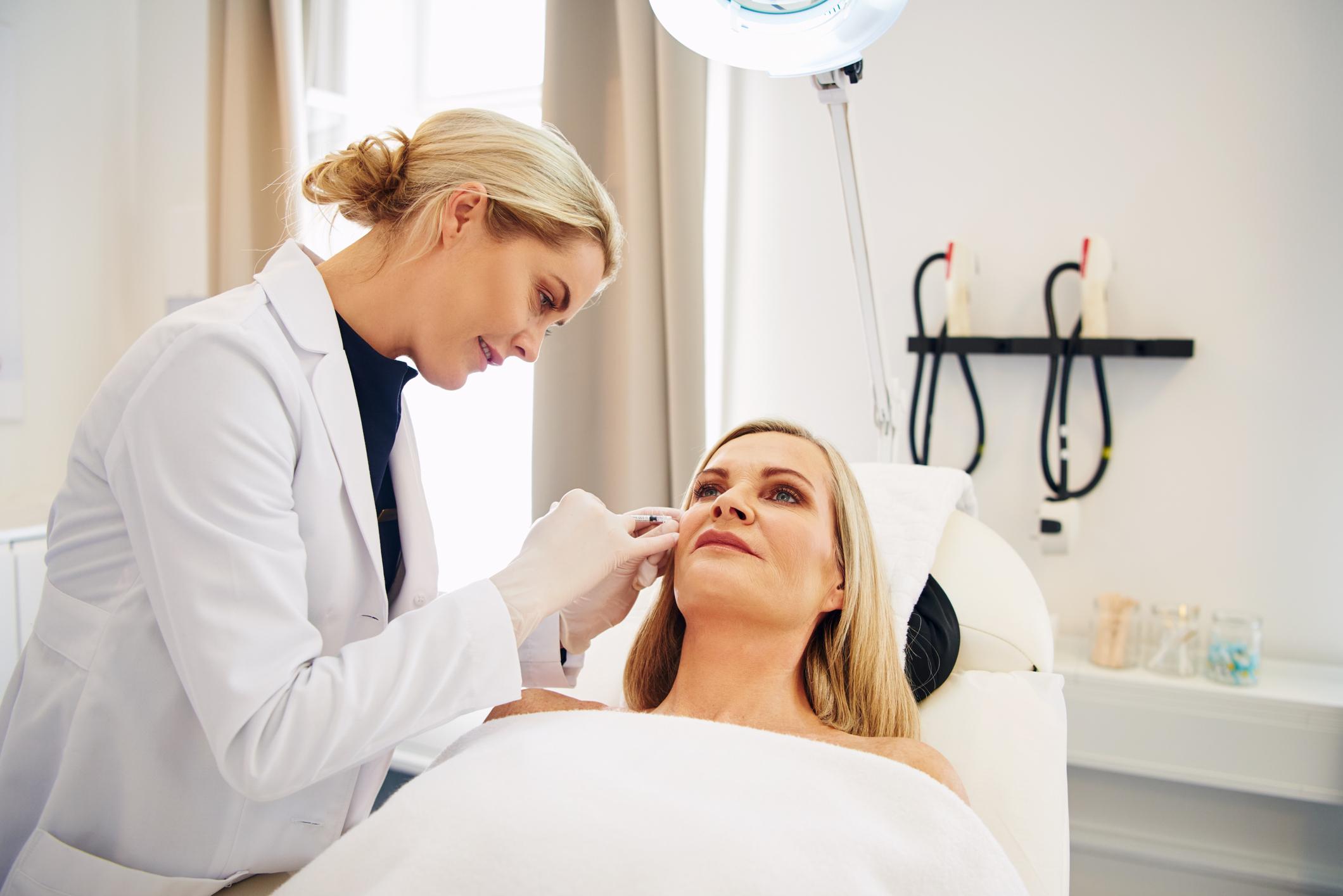
Some examples of services an esthetician can offer include:
- facials
- microdermabrasion
- hair removal procedures like waxing, threading, and sugaring
- makeup application, including eyebrow tinting and eyelash extensions
- body scrubs, masks, and wraps
- some types of superficial chemical peels — they can’t perform aggressive peels that penetrate deeper into the skin
Estheticians often work at salons or day spas.
Medical estheticians (sometimes called aestheticians), however, might work alongside dermatologists or cosmetic surgeons in more clinical settings, like dermatology clinics and other healthcare facilities. These professionals might offer treatments like:
- pre-and post-surgical skin care
- tattoo removal
- deeper chemical peels
- laser hair removal under physician supervision
There is no specific license to become a medical esthetician, but they typically pursue further education and training covering the specific treatments they’ll be performing.
Training and credentials
In all 50 states, estheticians need a license to practice. First, aspiring estheticians need a high school diploma or GED certificate to attend cosmetology school. These programs typically last between 4 and 6 months and require 600 hours of training.
Program requirements vary from state to state, but they generally range from 250 to about 1,000 hours of coursework.
After completing training, an esthetician must take a state-approved exam to obtain their license. These exams include a written portion and a hands-on or “practical” portion, which involves performing treatments on a mannequin or volunteer model.
Once they have a state license, an esthetician may also choose to pursue national certification through the National Coalition of Estheticians Associations (NCEA). This is the highest level of training for an esthetician, and it involves more in-depth training on advanced laser, facial, and drainage techniques.
Both dermatologists and estheticians are licensed professionals who can help with your skin care needs.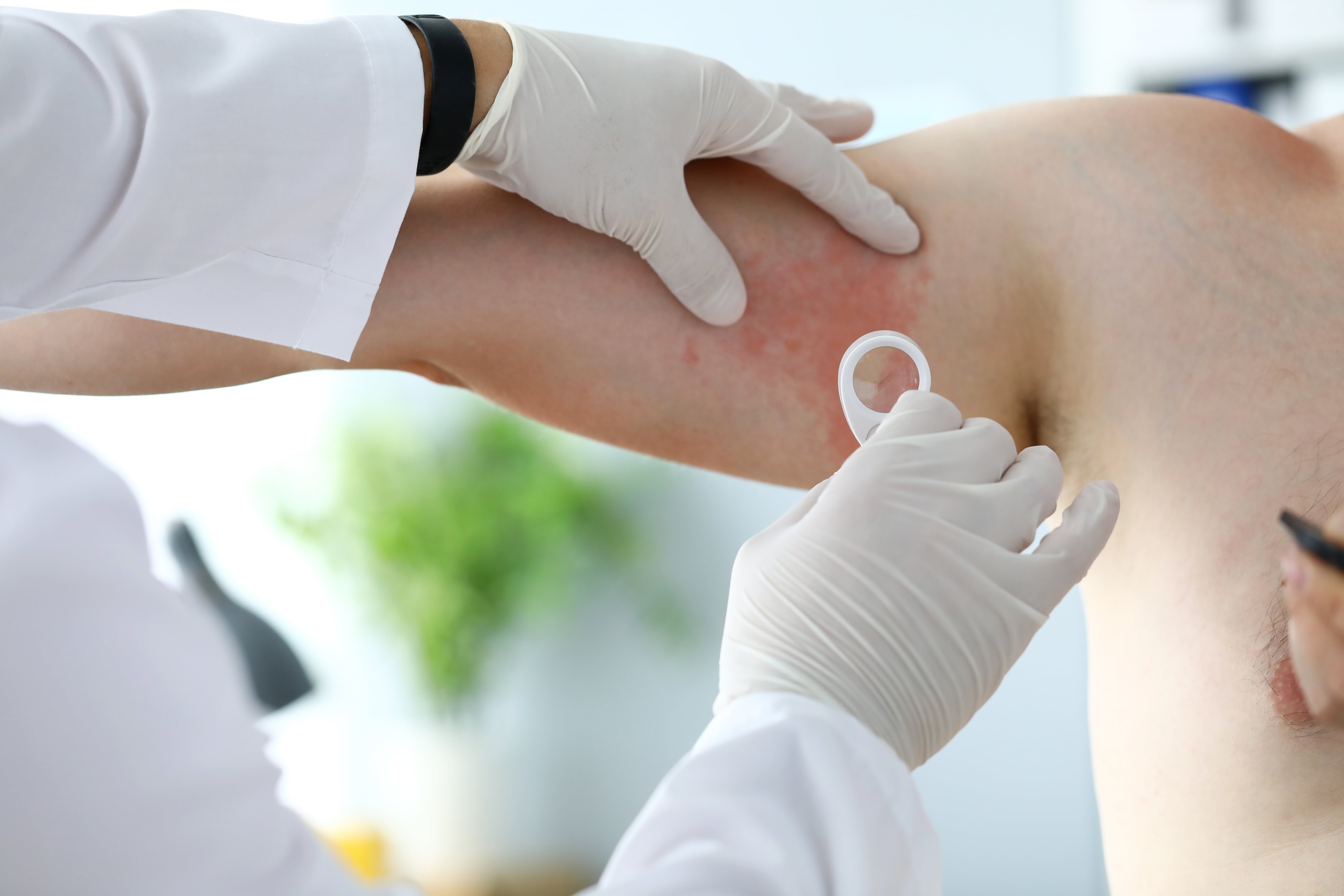 Your choice will typically come down to your individual concerns.
Your choice will typically come down to your individual concerns.
When to connect with a dermatologist
You’ll generally want to consult a dermatologist for any medical issues, including:
- rashes, dryness, or skin discoloration
- lesions
- acne
- moles
- eczema
- psoriasis
- any signs of skin cancer
Was this helpful?
If you don’t have any specific symptoms but want to address your skin’s appearance, an esthetician can offer microdermabrasion, facials, and other superficial treatments.
Just keep in mind that in most states, only dermatologists can perform more invasive treatments like Botox, dermal fillers, and scar revision surgery.
A few more distinctions to keep in mind:
- Peels. Estheticians can perform mild peels, like those containing alpha hydroxy acids. In some states, they can also offer moderate peels with glycolic acid. Only dermatologists can perform deep peels that fully penetrate the middle layer of skin, including peels containing phenol or trichloroacetic acid.

- Laser treatments. In most states, only dermatologists can perform laser treatments. But a few states do allow estheticians to perform certain laser procedures, like laser-based skin rejuvenation and laser hair removal.
- Microneedling. Most states classify this service as a medical treatment, meaning estheticians typically can’t provide it. In some states, estheticians working in medical environments may perform microneedling under the supervision of a licensed physician.
When you’re dealing with acne, skin discoloration, or persistent dryness, you’ll generally want to connect with a dermatologist first.
They can offer a diagnosis and help treat the skin condition by prescribing medications or medical treatments. They might then refer you to an esthetician who can offer services and help you build a skin care routine to maintain optimal skin health.
Before scheduling an appointment with a dermatologist, you’ll generally want to check in with your insurance provider first. Many will only cover your visit if you have a referral from your primary care physician (PCP). If that’s the case, your PCP can examine your skin and refer you to a local dermatologist if necessary.
Many will only cover your visit if you have a referral from your primary care physician (PCP). If that’s the case, your PCP can examine your skin and refer you to a local dermatologist if necessary.
If you’re searching for a dermatologist on your own, you can start by finding out which dermatologists are in-network for your insurance.
Considering your specific needs can also help you find the right professional. For example, a medical dermatologist can help you address severe rosacea or acne, while a surgical dermatologist can remove skin cancer or benign growths.
It never hurts to verify their board certification, either. They may list these credentials on their website, but you can also search the databases provided by the American Academy of Dermatology or the American Board of Dermatology.
When choosing an esthetician, you might start by asking trusted friends or family members for a recommendation.
Always make sure they have a license to practice in your state. You may also want to find one certified by NCEA, as mentioned above.
You may also want to find one certified by NCEA, as mentioned above.
Also helpful? Reading any reviews for their services or business and asking them about their areas of specialty before scheduling an appointment.
When it comes to dermatologists and estheticians, one type of professional isn’t necessarily better than the other. Ultimately, it comes down to the specific skin care concerns you want to address.
As a quick rule of thumb, consult a dermatologist for any skin conditions that may require medication or surgery. Reach out to an esthetician for surface-level aesthetic concerns or general skin maintenance guidance.
At the end of the day, what’s most important is finding an accessible skin care professional you can trust. You might even find that working with both offers the best way to achieve your skin goals.
Rebecca Strong is a Boston-based freelance writer covering health and wellness, fitness, food, lifestyle, and beauty. Her work has also appeared in Insider, Bustle, StyleCaster, Eat This Not That, AskMen, and Elite Daily.
How to Know If You Should See an Esthetician or a Dermatologist
Beauty
Related Condition Centers
- Dermatology
- Acne
- Skin Cancer
Who does what?
By Sara Coughlin
Getty / lOvE lOvE
In a perfect world, our skin would be all of the following at all times: clear, glowing, and healthy. However, until that world actually exists, we must figure out how to make our skin happy on our own—and when to call in the big guns if necessary, like a dermatologist or an esthetician.
If you’ve ever gotten a facial or an eyebrow wax, you’ve probably seen an esthetician. And if you’ve ever gotten a skin check, you’ve probably seen a dermatologist. But what exactly does each one do? And when should you see one over the other?
Luckily, seeing either one will usually help you improve the quality of your skin in some way, but there are a few instances in which it really pays to see one or the other. Here, we’ll take a closer look at the qualifications for dermatologists and estheticians, and when you ought to visit each.
Here, we’ll take a closer look at the qualifications for dermatologists and estheticians, and when you ought to visit each.
Here’s what it takes to be a board-certified dermatologist.
Any board-certified dermatologist will have completed a four-year undergraduate degree, a four-year medical school degree, a one-year internship in a medical subject of their choice, and a three-year dermatology residency program, Anne Chapas, M.D., clinical instructor of dermatology at Mount Sinai Hospital, tells SELF.
At the end of their residency program, they take a final exam through the American Board of Dermatology (ABD), and if they pass, they’ll be considered board-certified in dermatology. “About a quarter of dermatologists then pursue additional training after residency,” Dr. Chapas explains, and this training usually takes the form of fellowship programs in such subspecialties as cosmetic dermatology, pediatric dermatology, or dermapathology.
In order to maintain their certification, dermatologists who got their certification after 1991 must participate in the ABD’s maintenance of certification program, which generally consists of continuing medical education, a series of self-assessment activities, and exercises around professional self-improvement.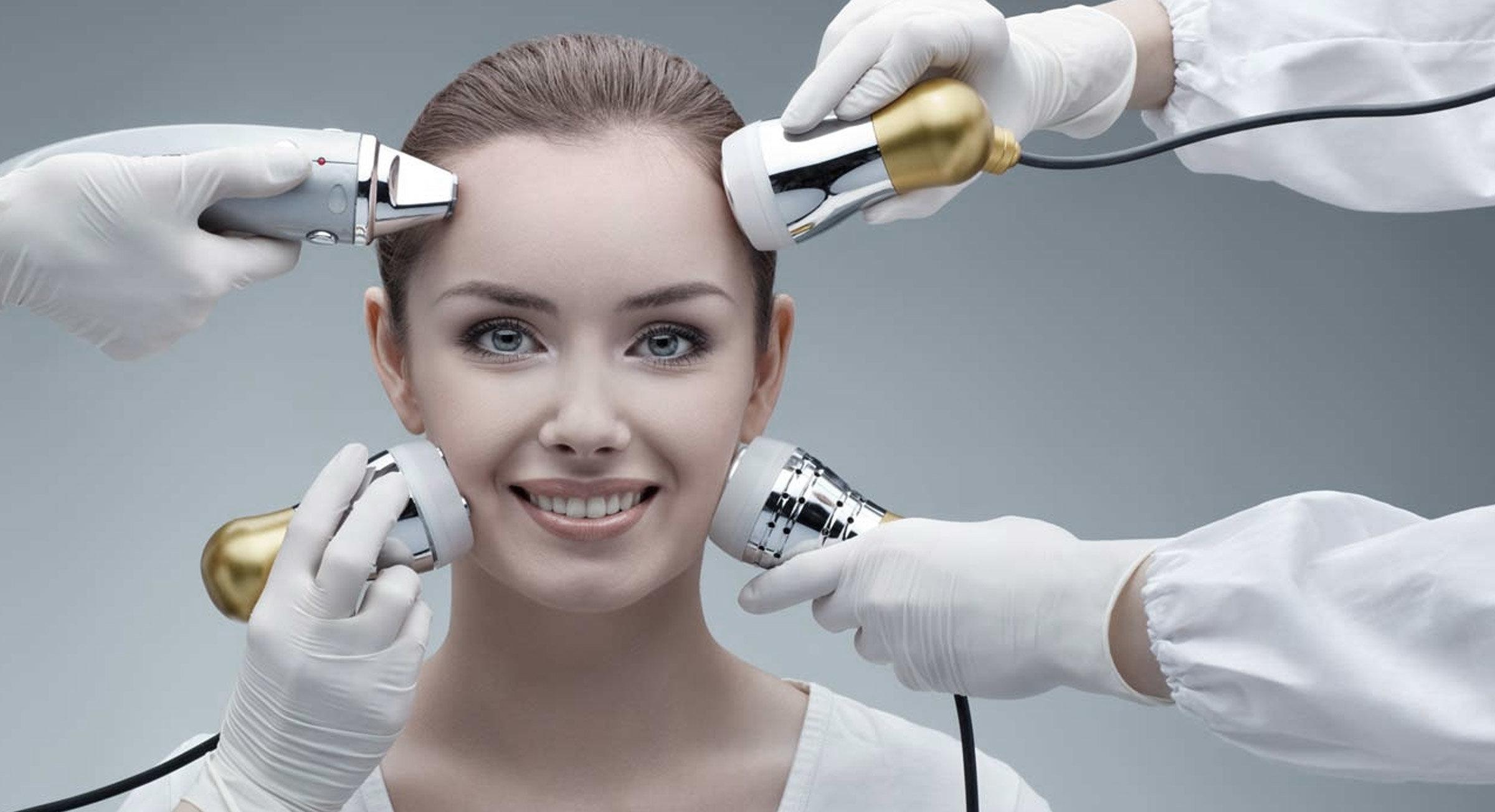 (Anyone who was board-certified prior to 1991 has been granted a lifetime certificate.) The maintenance of certification program culminates in a major recertifying exam every 10 years. Although there are certainly dermatologists who don’t pursue board certification, it’s one way for providers to demonstrate their expertise and commitment to practicing dermatology.
(Anyone who was board-certified prior to 1991 has been granted a lifetime certificate.) The maintenance of certification program culminates in a major recertifying exam every 10 years. Although there are certainly dermatologists who don’t pursue board certification, it’s one way for providers to demonstrate their expertise and commitment to practicing dermatology.
Independent of the ABD is the American Academy of Dermatology (AAD), which aims to educate, unify, and represent all practicing dermatologists in the United States (its membership is currently at 20,500 derms). Only dermatologists who are board-certified can join the AAD as fellows, while those who are eligible to take the board exam can join as associates.
Here’s how estheticians get trained and licensed.
The exact requirements for estheticians differ between states. But in most states, estheticians must undergo somewhere between 300 and 1,000 hours of training at an esthetics school or school of cosmetology, or as an apprentice, and then pass a state exam—often with both practical and written components—in order to earn their license.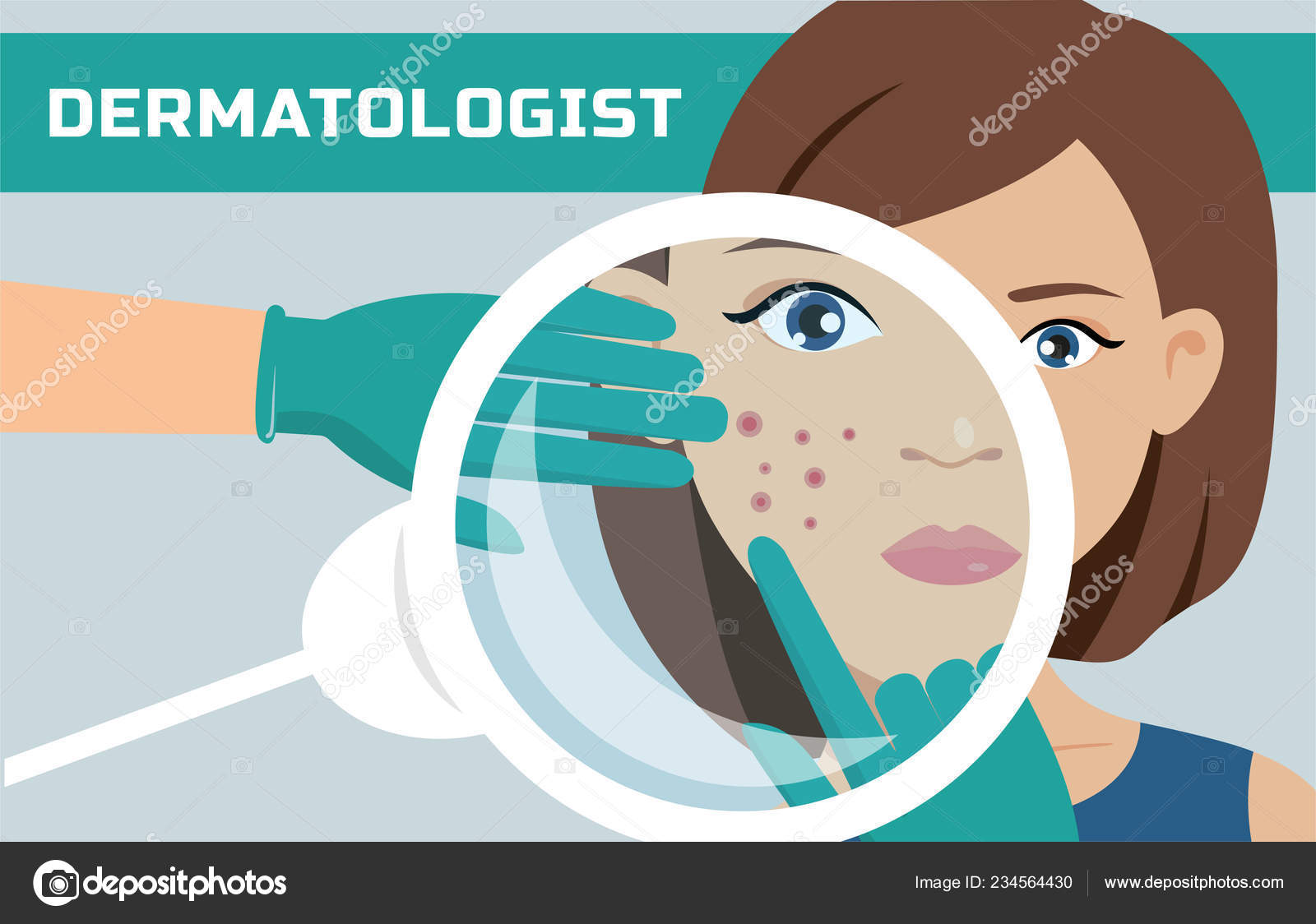 After that, most states will require them to regularly renew their licenses or take a few hours of continuing education every year. Estheticians may also have undergraduate degrees from two- or four-year colleges, but that’s not required.
After that, most states will require them to regularly renew their licenses or take a few hours of continuing education every year. Estheticians may also have undergraduate degrees from two- or four-year colleges, but that’s not required.
The esthetic training curriculum generally includes skin-care basics, skin anatomy and physiology, safety and sanitation guidelines, infection control, and procedures such as facials and waxing. Three states—Utah, Virginia, Washington—as well as Washington, D.C., currently offer a master esthetician license, which indicates that the esthetician has received additional training in more intensive procedures, such as deeper chemical peels or ultrasound or laser procedures.
In addition to their state licensure, estheticians can also pursue national certification through the National Coalition of Estheticians, Manufacturers/Distributors & Associations (NCEA). For the record, this certification does not license an esthetician to work anywhere they want—rather, it provides them with a higher credential in their profession, plus more comprehensive training. At the moment, about 5,000 estheticians are nationally certified.
At the moment, about 5,000 estheticians are nationally certified.
Consisting of 1,200 hours, the national certification takes a more in-depth look at skin pathology, dermatologic terminology and disorders, and more advanced treatments including laser and light services, microcurrent facials, and ultrasounds and drainage techniques.
“There [are] various safety considerations for these advanced modalities, which the national certification goes more into,” Susanne Warfield, executive director of the NCEA, tells SELF.
Sometimes, you should definitely go straight to the derm.
For the record, the U.S. Preventive Services Task Force concluded in 2016 that there isn’t enough evidence for those without symptoms to get a full body skin cancer screening every year. But you should definitely talk to a dermatologist if you notice anything that might be a symptom, such as a mole that’s large or evolving, and the AAD recommends screening yourself to make sure you know what’s normal for you.
There are certain other issues that can only be addressed by a dermatologist. Specifically, deep and painful acne lesions, cystic acne, acne that’s already started to scar, redness, or anything that’s scabbing and crusting would warrant a visit to your derm, Dr. Chapas says.
Additionally, anything that hasn’t already been diagnosed—rashes, dryness, sensitivity, and brown spots, chiefly—should be seen by a derm first, Carolyn Jacob, M.D., a clinical instructor of dermatology at Northwestern University, tells SELF. Even if all you want to do is get rid of it, she says the risks involved with seeking out a quick fix before knowing exactly what you’re dealing with are far too great.
If you have a new brown spot, for instance, you’ll want to check with a dermatologist before getting it addressed by an esthetician. Instead of a harmless freckle or acne-related dark spot, it could be a melanoma, Dr. Jacob explains. A cancerous mole is addressed very differently and could be deadly if left untreated.
Plus, even esthetic treatments—which can include chemical peels and lasers—may have risks and side effects associated with them, so it’s crucial to know both what you’re treating and why you’re treating it. Simply put, “you can’t go zapping away without a diagnosis,” Dr. Jacob says. Any specific concerns or uncertainties you have about your skin should be brought to your dermatologist.
If you’re looking for pampering or routine maintenance, an esthetician can help with that.
As Dr. Jacob puts it, esthetic procedures like facials and extractions can be soothing, relaxing, and downright fun parts of one’s skin-care routine.
Most Popular
Even though an esthetician won’t be able to offer treatments for severe or medical skin conditions, they may be able to improve the appearance of your skin overall. Anyone who’s simply looking for glowier skin (read: thoroughly moisturized, exfoliated, massaged, and calmed) will probably be best served at an esthetician’s office, Dr. Chapas says.
Chapas says.
Once you’re squared away with any diagnoses you need and have your derm on call in case you notice any changes in your skin, you can go forth and enjoy a monthly facial at your favorite spa with ease.
Estheticians and dermatologists can—and do—work together.
It’s possible that an esthetician may refer you to a dermatologist, and vice versa. Warfield explains that, technically, estheticians are not allowed to treat any diseases of the skin. So, if they notice a lot of sun damage on the top of a client’s ear, for example, they can educate them on the importance of sun protection, but they will need to recommend that the client go see a derm for further evaluation.
Or perhaps they’ll see a client who wants help managing acne but find that the client’s skin may actually benefit from prescription-strength treatment. Because estheticians cannot prescribe medications, they would, again, encourage the client to make an appointment with a dermatologist.
“I definitely see that the referrals go back and forth between our professions,” Dr. Chapas says. For instance, some people with serious skin conditions see an esthetician before a dermatologist simply because it’s more convenient for them. “People start simple with what’s close and what’s easy,” she says. “And then, depending on whether or not they’ve resolved their problems, they may seek out the next level of professional advice.”
Chapas says. For instance, some people with serious skin conditions see an esthetician before a dermatologist simply because it’s more convenient for them. “People start simple with what’s close and what’s easy,” she says. “And then, depending on whether or not they’ve resolved their problems, they may seek out the next level of professional advice.”
This is why Dr. Chapas advocates for an “open and fluid” line of communication between dermatologists and estheticians (and other care providers, for that matter). Sometimes, word-of-mouth is the most effective way to get people who genuinely need dermatological care to see her.
On the other hand, there are times when dermatologists call upon the services of estheticians. In particular, Dr. Chapas may refer younger patients, especially those who are more concerned with maintenance and prevention than any particular skin condition, to see an esthetician. And for some of her patients with acne, Dr. Chapas will suggest that they see an esthetician for a peel or microdermabrasion treatment, all the while treating them medically too.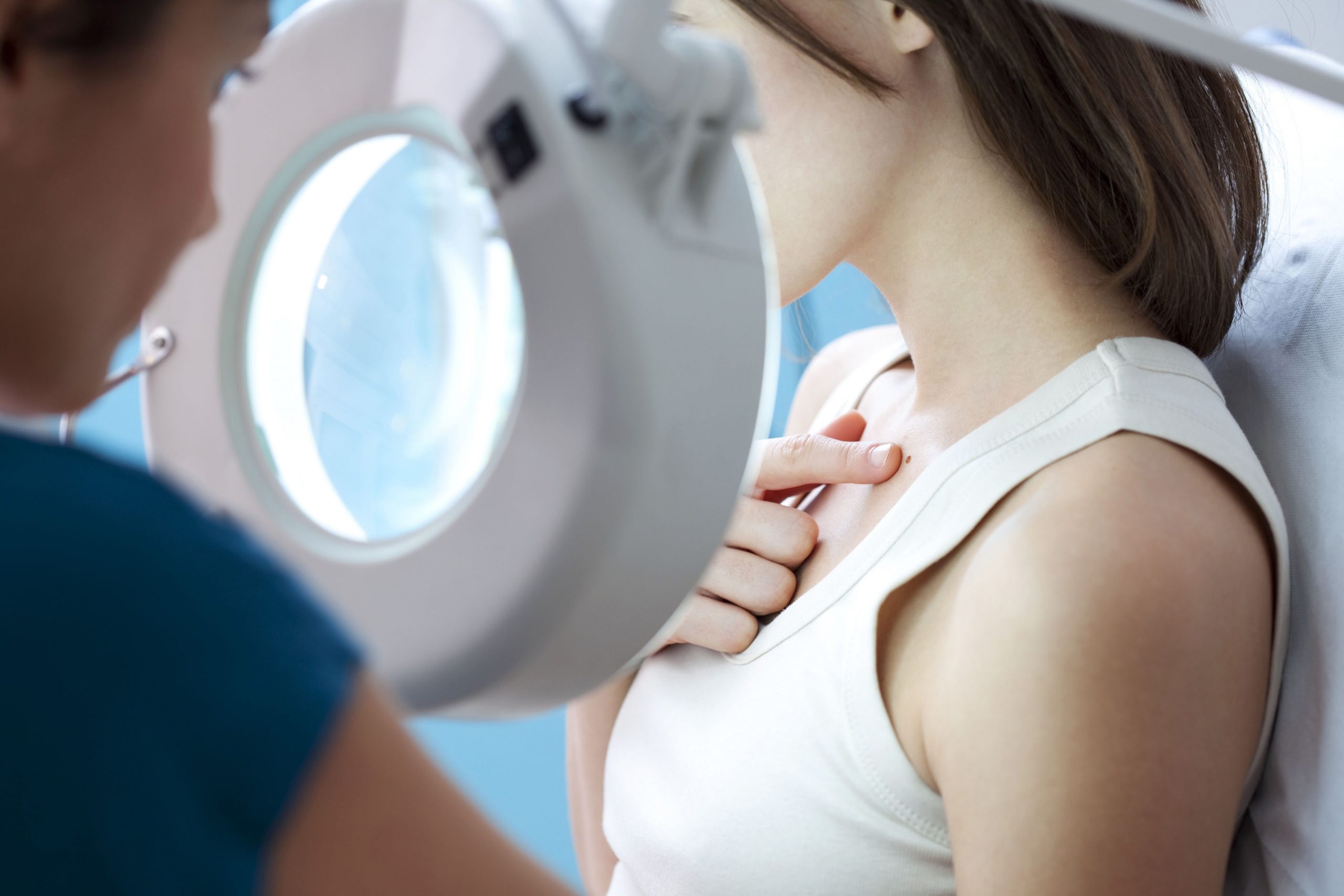
“We work as partners, communicating back and forth,” she says. While Dr. Chapas may see a patient every few weeks or just once a year depending on what they’re dealing with, an esthetician may see that same individual even more frequently—and when they stay in touch with each other, they can cross-check their recommendations and ensure that the patient is compliant with the treatment.
The bottom line: Both dermatologists and estheticians can be fantastic allies for your skin, but keep in mind that they aren’t interchangeable.
Related:
- Are Facials Supposed to Make Things Worse Before They Get Better?
- I Had a Dermatologist Critique My Skin-Care Routine—and Here’s What I’m Changing
- 11 Things Dermatologists Want You to Know About Sensitive Skin
Sara Coughlin is a writer and editor with ample experience covering health and wellness trends. As SELF’s senior commerce writer, she’s taken a special interest in skin care, outdoor recreation, sleep, fitness gear and apparel, and more.
SELF does not provide medical advice, diagnosis, or treatment. Any information published on this website or by this brand is not intended as a substitute for medical advice, and you should not take any action before consulting with a healthcare professional.
Topicsdermatologyacneskin cancerSkin Care
More from Self
The 2023 SELF Healthy Beauty Awards: The Best Facial Cleansers, Scrubs, and Balms
Tester-approved products for dry, sensitive, acne-prone, and uneven skin.
The difference between a dermatologist and a cosmetologist? | Asmedia
Dermatologist and Cosmetologist are two terms that are often confused with each other, believing that this is, in general, one and the same specialty. Since the AsMedia clinic directly deals with both cosmetic and dermatological problems, let’s clarify this point in a little more detail.
Let’s clarify right away: both a dermatologist and a cosmetologist are doctors with a higher medical education in the specialty “Dermatology” or “Cosmetology”. Therefore, you should not think that a dermatologist is a professional doctor, but a cosmetologist is not. They are both doctors, simply specializing in different problems of our skin.
Therefore, you should not think that a dermatologist is a professional doctor, but a cosmetologist is not. They are both doctors, simply specializing in different problems of our skin.
Dermatologist deals with the diagnosis and treatment of skin diseases (psoriasis, alopecia, severe acne, rashes, eczema, allergic reactions, etc.). Cosmetologist deals with the correction of aesthetic problems that are not diseases, and skin care in different age periods: withering, maintaining the pH balance of the skin, eliminating wrinkles and age spots.
Almost every dermatologist can also be a cosmetologist, but a cosmetologist in order to become a dermatologist must undergo appropriate training and improve their skills. A specialist who both solves the problems of healthy skin and deals with skin diseases is called a dermatologist-cosmetologist.
Specialists of the clinic “AsMedia” are doctors of specialization dermatologist-cosmetologist; our doctors can equally treat pathological conditions of the skin, and carry out supportive cosmetic procedures. It is thanks to the medical specialization and the availability of state licenses for the implementation of medical activities that AsMedia is not an ordinary cosmetology and can guarantee the quality of its services.
It is thanks to the medical specialization and the availability of state licenses for the implementation of medical activities that AsMedia is not an ordinary cosmetology and can guarantee the quality of its services.
What do they turn to a beautician in the clinic “AsMedia”
You can contact our cosmetologist for the following services:
Laser hair removal;
Various types of peels;
- Facial cleansing;
Laser tattoo removal;
Laser facial rejuvenation;
Cryomassage;
Plasmolifting;
Biorevitalization;
Contour plastic;
Threadlifting with mesothreads;
mesotherapy;
Botox injections;
Electromyostimulation.
All these are procedures aimed at improving the quality of healthy skin, restoring its youth and beauty, eliminating signs of aging, non-critical cosmetic defects and imperfections.
Dermatological services of the clinic “AsMedia”
Treatment of alopecia (baldness) and scalp
Laser removal of moles, papillomas and warts
Treatment of an allergic rash
Treatment of atopic dermatitis
eczema treatment
Skin fungus treatment
Urticaria treatment
Treatment of neurodermatitis
Treatment of pyoderma
Treatment of psoriasis
Rosacea treatment
Seborrhea treatment
Vitiligo treatment
Onychomycosis
Removal of atheroma
As a rule, a dermatologist is consulted for noticeable defects: severe peeling / dryness / oily skin, acne, especially when it appears suddenly in adulthood, or the same sudden stretch marks, papillomas or alopecia.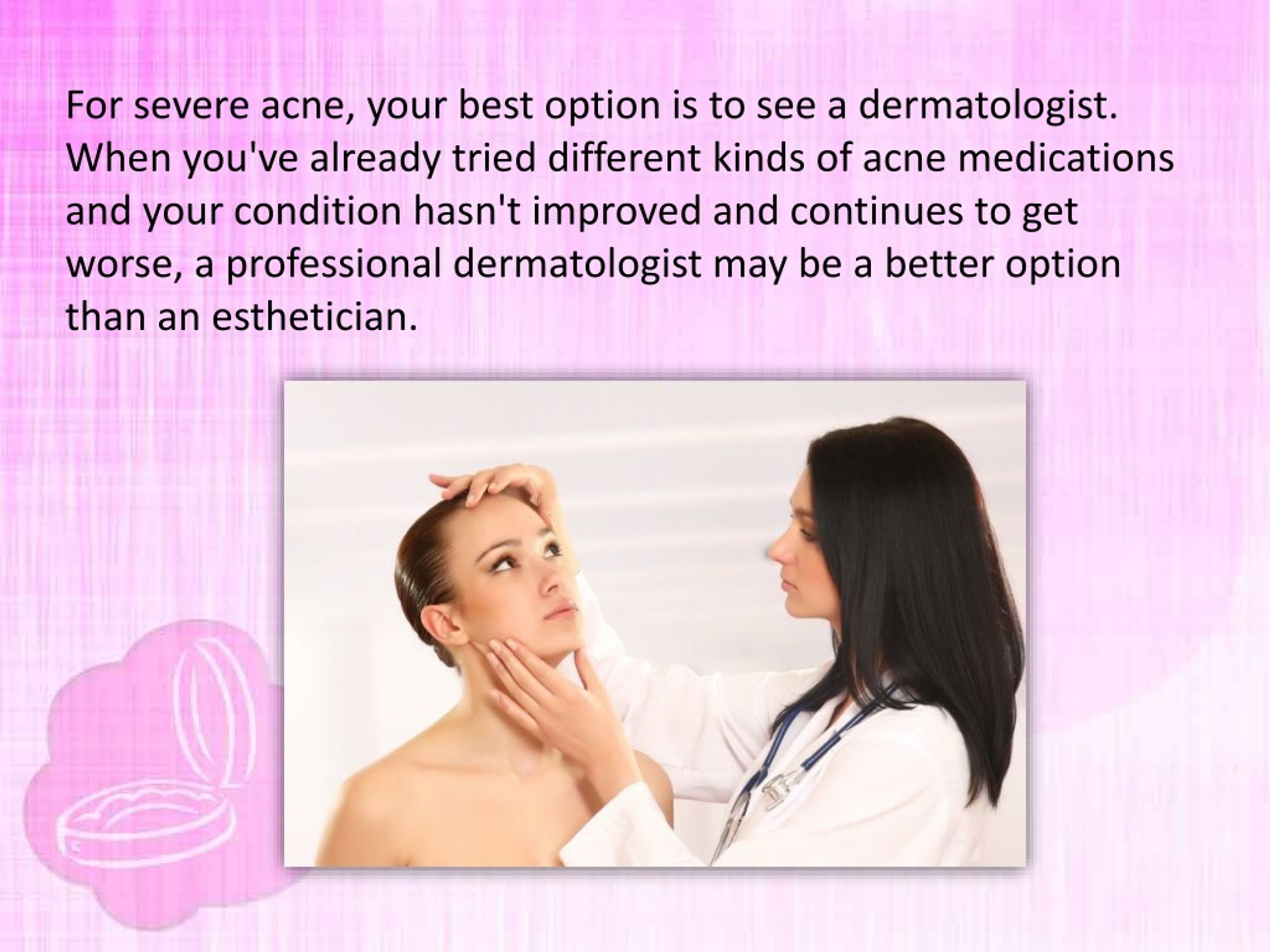 All dermatological procedures require prior skin analysis, history taking and preparation.
All dermatological procedures require prior skin analysis, history taking and preparation.
If you have any doubts about what procedure your skin needs, we invite you to a consultation of our specialists and computer diagnostics of the skin. Our doctors will select the procedures that are right for you, explain all the details of their implementation and subsequent skin care, and provide recommendations on care products and preparations.
Appointments can be made by calling 290-88-88 or using the online application form.
Dermatologist VS Cosmetologist – Cosmetology on Vasilyevsky Face control
Dermatovenereology today is a large area of medical science. A dermatovenereologist is a medical specialist who treats diseases of the skin and mucous membranes. The name of the specialty includes two areas that are inextricably linked.
Dermatology is a field related to the diagnosis and treatment of everything related to our skin and its derivatives (hair and nails).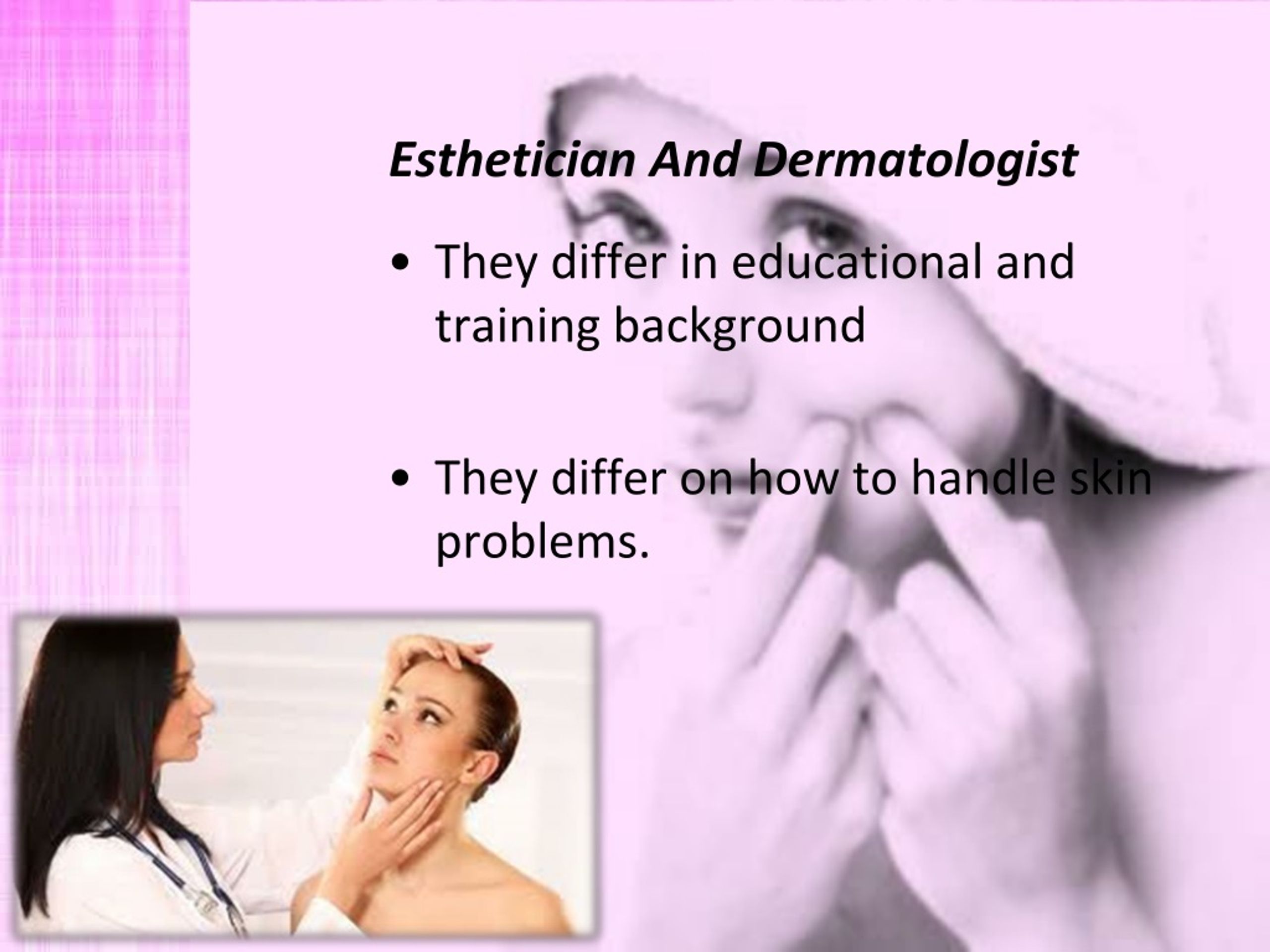 A venereologist is more often consulted for diseases of the skin and genital mucosa.
A venereologist is more often consulted for diseases of the skin and genital mucosa.
Patients address a dermatologist with various problems, most often these are diseases such as dermatitis, psoriasis, allergic reactions, acne, rosacea, bacterial, fungal and viral infections, neoplasms and other diseases that have manifestations on the skin, nails or hair .
Historically, in Russia, the treatment of diseases of the skin and mucous membranes is the responsibility of a dermatovenereologist. Not so long ago, the term “beautician” was not used to refer to a doctor, but often to a person who provided facial or body skin care services to a client. At the same time, such a specialist could not have a secondary or higher medical education, the results of such treatment methods were very modest, but the side effects were minimal.
However, the rapid development of cosmetology in the last 15-20 years, the emergence of many effective cosmeceuticals, the development of high-energy technologies and the emergence of many devices based on various physical factors affecting living tissues, the development of injection methods for skin treatment, has transferred cosmetology from the care niche into a serious medical industry, where an amateur can cause irreparable harm to the appearance, and sometimes to the health of the client.
Thus, in 2009, by order of the Ministry of Health and Social Development of Russia, the medical specialty “cosmetology” was approved. First, the specialist receives a higher medical education, and then the specialty of a dermatovenereologist. Only after that the doctor can study further and receive the specialty of a cosmetologist. And this is absolutely justified, since it is necessary to be a professional in the field of treatment of diseases of the skin and mucous membranes in order to competently solve aesthetic problems in this area.
A dermatovenereologist is usually consulted for diseases of the skin and mucous membranes that need to be treated, and if they are not dealt with, this will cause a deterioration in health and quality of life in general.
A cosmetologist is approached when aesthetic problems come to the fore, associated with various reasons – individual features of the face (for example, you want to change facial features and make it more harmonious), aging processes, the influence of environmental factors, the manifestation of certain skin diseases (acne or rosacea). Therefore, a cosmetologist must be a qualified specialist in the field of diseases of the skin and mucous membranes, diseases of internal organs, and also have the necessary training in the field of aesthetic medicine. Therefore, if a patient addresses a cosmetologist with aesthetic or other complaints related to the skin or mucous membranes, the doctor examines the patient, performs the necessary studies and makes a diagnosis. Then he either performs the necessary procedures, or sends him for treatment to a dermatovenereologist or doctors of other specialties, if necessary.
Therefore, a cosmetologist must be a qualified specialist in the field of diseases of the skin and mucous membranes, diseases of internal organs, and also have the necessary training in the field of aesthetic medicine. Therefore, if a patient addresses a cosmetologist with aesthetic or other complaints related to the skin or mucous membranes, the doctor examines the patient, performs the necessary studies and makes a diagnosis. Then he either performs the necessary procedures, or sends him for treatment to a dermatovenereologist or doctors of other specialties, if necessary.
How do you choose your cosmetologist?
First of all, do you pay attention to popularity and promotion in social networks?
The number of followers on Instagram? “Likes” and views on the specialist’s page? But in reality, this does not always indicate the professionalism of the doctor, since it often turns out that the popular “cosmetologist” does not even have a higher medical education, and the photos of the “before” and “after” works do not allow an objective assessment of the result of the intervention. Therefore, if you want your reflection in the mirror to bring joy after a visit to a cosmetologist, you need to seriously approach the choice of a specialist to whom you entrust your appearance. A prerequisite should be the availability of appropriate education from a cosmetologist and work in an institution with a medical license. How else can you assess how ready you are to trust the chosen specialist? One way is to look at the photos of the results of the “before” and “after” procedures.
Therefore, if you want your reflection in the mirror to bring joy after a visit to a cosmetologist, you need to seriously approach the choice of a specialist to whom you entrust your appearance. A prerequisite should be the availability of appropriate education from a cosmetologist and work in an institution with a medical license. How else can you assess how ready you are to trust the chosen specialist? One way is to look at the photos of the results of the “before” and “after” procedures.
Unfortunately, even among medical specialists, the exhibited photographs of the results “before” and “after” can distort reality. Compare the “before” and “after” in the picture below – isn’t it impressive results?
Unfortunately, these photos mislead the viewer…. Since the only thing that has been changed on them is just the conditions of photography – namely, the angle of incidence of light!
Thus, ordinary “naked eye” inspection or standard photography does not provide an objective assessment, as it is very dependent on lighting or shooting conditions and does not allow measurement of data (for example, the depth of a wrinkle or wrinkle).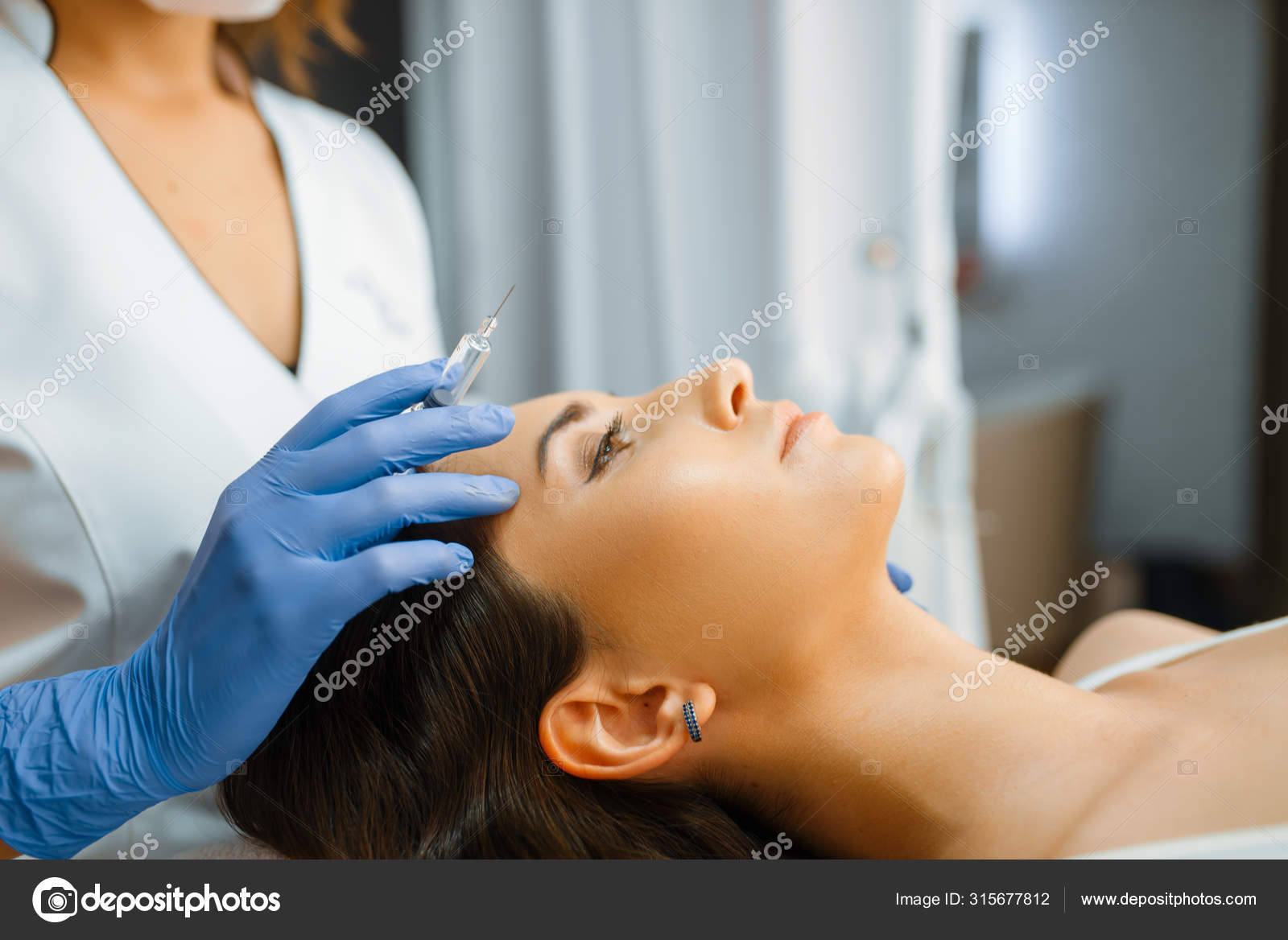
Even if photography is not an objective method that we can trust, is it really possible to see whether our skin, its relief, texture, wrinkle depth, the number of pigment spots and redness areas after procedures by a cosmetologist change?
Yes, in the arsenal of modern cosmetology there are technologies that make it possible to assess the condition of the skin and the results of cosmetic procedures objectively, to “see” our skin in 3D format, to assess its condition by the number and depth of wrinkles or folds, the size of age spots and vascular spots, texture and skin relief and other indicators.
One such valuable tool in the practice of a cosmetologist is the ANTERA 3D™ skin imaging device.
This is an original device that allows you to analyze the condition of the skin, including its change in the course of treatment.
ANTERA 3D™ is based on advanced optical technology developed at Trinity College (Dublin, Ireland) that allows you to reproduce the image in both two and three-dimensional format.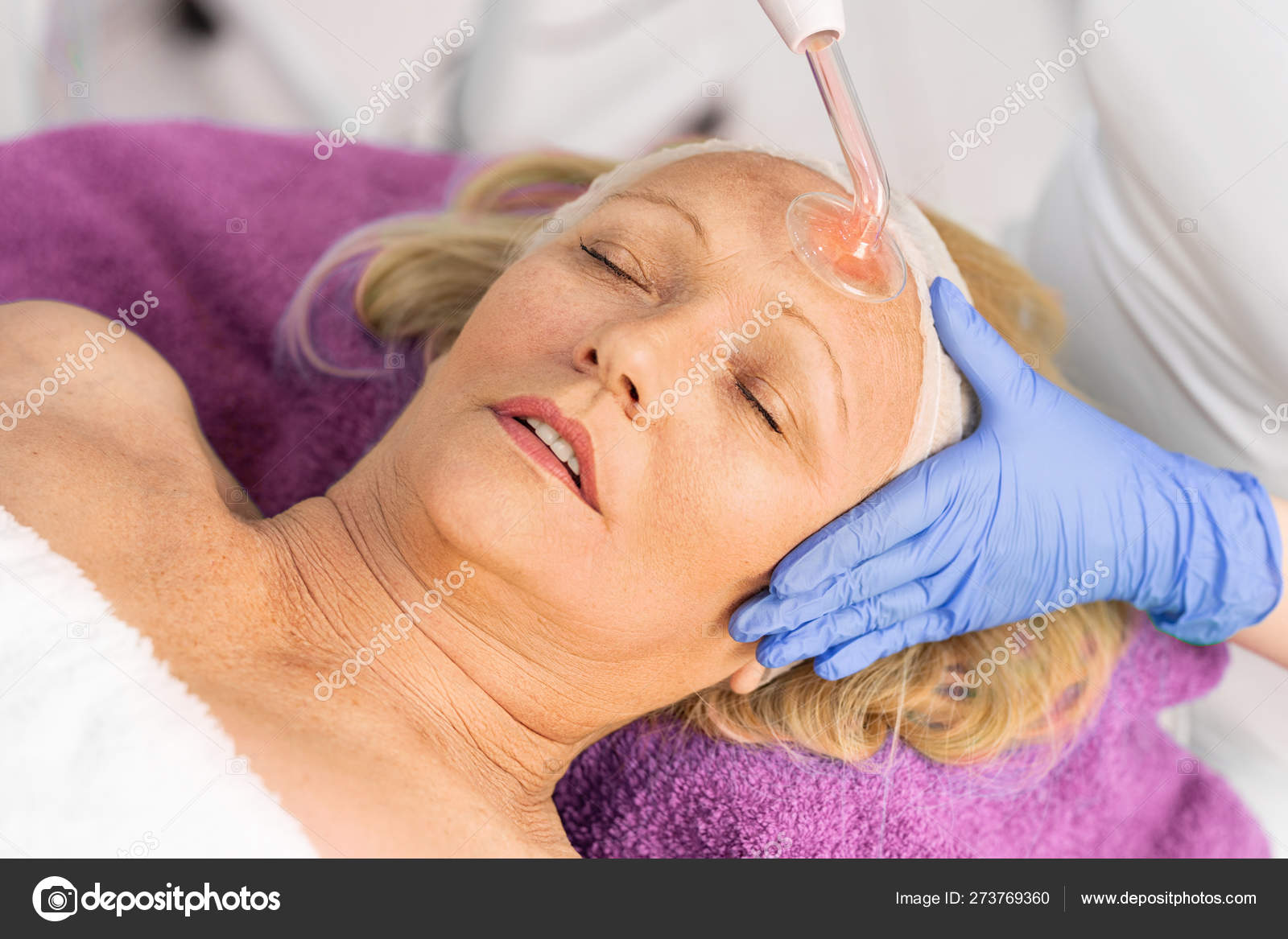
The ANTERA 3D device scans the skin with LEDs with different wavelengths (color) to display the entire visible spectrum – the picture below shows what the LEDs look like when the device is turned on.
The scanning procedure is simple and takes only a few seconds. It does not require special conditions for patient preparation.
During shooting (scanning), the device takes thousands of pictures of the selected skin area in just a few seconds, while each picture is taken at a different angle and with different degrees of illumination.
Illumination of various types makes it possible to detect not only changes in the skin relief, but also those changes that are poorly recorded by conventional photography – for example, melanin (pigmentation areas) and hemoglobin (vascular pattern, skin reddening areas).
The light emitted by LEDs is partially absorbed, diffused and reflected off the skin surface – as shown in the figure below.
Reflected light is collected by special sensors inside the device and transmitted to a connected computer for analysis of images with different illumination.
Thanks to complex mathematical algorithms, the ANTERA 3D™ device allows you to get a three-dimensional model of the skin, as well as conduct a multispectral analysis of the epidermis and dermis.
How can we use this?
For example, you can compare before and after images and evaluate how the skin condition has changed after the procedure. The picture below compares images before and after laser skin resurfacing.
The program compares the two images and displays the result as a graph, which shows that after the procedure, the average wrinkle depth decreased by 52.8%.
Or you can compare the images before and after the contouring procedure (gel-filler injection to correct the nasolabial fold).
The program will also display the result in the form of a graph, which will show in percentage terms how much the skin condition has improved.
We can also evaluate the evenness of the skin color after the photorejuvenation procedure, which was performed in order to remove the pigmentation of the skin of the face.

